Arthrosis is the most common of all musculoskeletal disorders. The knees are especially vulnerable to them as they carry most of the load. Let’s take a closer look at what is knee arthrosis and how to treat this disease.
Characteristics of the disease
Arthritis of the knee joints is a pathology associated with the development of degenerative-dystrophic processes in the cartilage tissue of these joints. As the disease progresses, the disease affects not only the cartilage itself but also other tissues, including the ligaments and periarticular muscles, and over time, processes can develop that contribute to bone destruction.
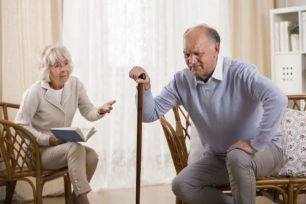
Risk Groups
As we age, the body experiences difficulty with tissue malnutrition and accelerated wear. Under the influence of mechanical, biochemical and other factors, the cartilage tissue begins to gradually deteriorate, which further develops into arthrosis of the right knee joint or left joint.
The frequency of diagnosis of pathology increases with age. Women are particularly prone to develop gonarthrosis due to their body characteristics and hormonal changes.
Athletes and people whose work involves lifting weights and constant strain on their legs are also at risk.
In general, the following risk groups can be distinguished:
- elderly people;
- athletes;
- people with knee injuries;
- patients who have had knee surgery;
- sitting;
- obese;
- with hard physical work or the need to be constantly on our feet;
- patients with endocrine diseases;
- people with hormonal disorders;
- leading an unhealthy lifestyle;
- with innate pathologies of the musculoskeletal system.
When you enter a risk group, you should regularly monitor the condition of your joints and take preventative measures.
Reasons for improvement
If we talk about the specific causes of dystrophic processes in cartilage tissue, they are related to a person's daily life in many ways. Existing health problems also play a role.
The main causes of gonarthrosis are:
- Injuries. Any damage to the knee and adjacent tissues, i. e. bruises, displacements, tears and sprains, cracks, fractures, etc. The consequences may occur for some time after the injured area has completely healed.
- Congenital anomalies. This includes, for example, joint instability, curvature, and other developmental and functional abnormalities associated with human skeletal structural features.
- Changes in age. Gradually, the cartilage tissue wears out and calcium is washed out of the bones. The older a person is, the more pronounced these processes are.
- Obesity. Being overweight slows down metabolic processes and contributes to overburdening the limbs. Obese people almost always have foot problems.
- Endocrine diseases.An unhealthy state of the endocrine system leads to hormonal imbalances and metabolic disorders.
- Operational Interventions. Surgical manipulations on the meniscus have a particularly strong effect. When removed, gonarthrosis develops in 90% of cases.
- Stress. Strong emotional experiences negatively affect the condition of the entire body, including elements of the musculoskeletal system.
- Tissue malnutrition. Most often, these processes are associated with impaired blood circulation as they reach all the necessary nutrients through the vessels in the tissue.
- Heavy loads.Weight lifting and carrying, improper running and jumping, violation of the technique of performing physical exercises, prolonged standing position - all this puts an excessive strain on a person's legs.
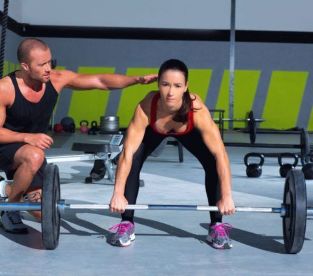
If you do not take action to prevent these causes from being affected, the cost of such careless treatment of your health will be a multiple problem for the musculoskeletal system and other body systems.
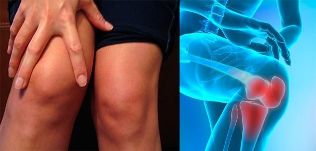
Symptoms
At first, the disease is asymptomatic or anxiety occurs only occasionally. Most of the time, the knees start to hurt after a long stay or an intense day at work. Because such signs are not annoying and disappear completely after rest, one does not immediately notice that they have serious health problems.
Discomfort gradually increases, severe pain occurs. They are painful in nature, but can be sharp and sudden when moving. As the disease progresses, the discomfort increases.
Other symptoms of gonarthrosis include:
- impairment of knee motor ability;
- the appearance of a loud crack when moving;
- tissue swelling and hyperemia;
- curvature of the limbs.
Most often, the pursuit of pain relief is the main stimulating factor in referring a person to a clinic. The sooner you do this, the better your chances of stopping the pathological process. Otherwise, the changes will become irreversible and the problem cannot be solved by conservative methods.
Elevated temperatures may be observed in some cases. This phenomenon is rarely observed, indicating an intense inflammatory process. The cause of the infection can be, for example, if you have recently had a foot injury.
Types of pathology
In medical practice, the disease has a special classification.
There are the following types of knee arthrosis:
- Left or Right. It is localized on only one side, meaning it also affects the left or right knee. This situation is most commonly observed after a limb injury.
- Double-sided. At the same time, abnormal processes develop in both legs. The symmetrical development of the disease is typical in most cases, as the internal processes of the human body have a huge impact.
- Primary. It develops as an independent disease. The provocative factors are improper lifestyle, stress, age-related changes, and so on.
- Secondary. Gonarthrosis is the result of another disease of the musculoskeletal system and closely related systems. Traumatic limb injuries also fall into this category.
It is also worth distinguishing between periarthrosis. This disease affects the muscles and ligament devices that cause the joint to move.
Another important category is knee hyperarthrosis. This is the name of the progressive degenerative processes of cartilage. There is pronounced deforming gonarthrosis in the final stages. It is worth talking in more detail about the stages of pathology development.
Stages of progression
There are four main stages of knee arthrosis. Each is distinguished by a more pronounced manifestation of the disease and the emergence of new negative processes.
- Section 1. At times, an uncomfortable feeling occurs, but after resting and working the foot, it disappears. For the diagnostician, changes in tissue structure are still not noticeable, but cartilage feeding has already been disrupted, gradually provoking the progression of the pathology.
- Section 2. The pain becomes annoying, the cartilage becomes significantly thinner, leading to narrowing of the joint space. A characteristic crackling appears, the movements are accompanied by unpleasant feelings.
- Sections 3 to 4. The x-ray photo clearly shows the changes in the joint. The cartilage tissue is worn out, the bone begins to deform at the sites of rubbing, some areas are overgrown with osteophytes, salt deposits are present. All of this blocks the movement of the foot and causes severe, incessant pain.
If the first stage of gonarthrosis can be completely eliminated by gentle methods and limb health can be completely restored, the third to fourth stages are irreversible and practically unsuitable with conservative treatment. It is therefore important that you seek help from a health care facility as soon as possible.
Consequences and possible complications
As for the consequences of gonarthrosis, there are initially no particular risks to human health if appropriate measures are taken in a timely manner. Of course, knee inflammation causes some discomfort, but the symptoms and the dystrophic process itself can still be eliminated.
The more the patient ignores the problem, the more neglected it becomes. In the second stage, the cartilage begins to deteriorate and can hardly be restored. Severe pain disrupts a person’s normal lifestyle, exerting psychological pressure.
The main consequences of progressive gonarthrosis are:
- persistent pain;
- blocks foot mobility;
- development of bone-salt growths;
- complete destruction of hialin cartilage;
- the spread of the pathological process to other areas;
- musculoskeletal involvement;
- disability.
The main question is: is it possible to go with knee arthrosis? Movement contributes to the healing of the whole body, but this rule only works if the disease is detected early.
In later stages, movement can only aggravate the destructive process, so it is recommended for the patient to go to bed and wear a special orthosis. With deformation and obstruction of the mobility of the legs, the gait is impaired, i. e. the person becomes disabled. This is the main risk of developing gonarthrosis.
Diagnostic rules
To prevent such complications and to avoid disability, you should seek help immediately. An orthopedic surgeon can give advice on treating gonarthrosis.
The success of further treatment depends largely on the level of detail of the diagnosis, so it is not necessary to disregard the specialist's instructions regarding the need to perform certain test procedures.
A comprehensive diagnosis of arthrosis can include the following methods:
- Laboratory blood tests. It is necessary to identify deviations from the norm in terms of core indicators. The presence of violations indicates an inflammatory process or other problems that may directly or indirectly indicate joint disease. The rheumatic test can be performed separately if needed. It is also important to assess blood glucose levels, as its increase may indicate problems with the endocrine system, which also affect the state of the musculoskeletal system and the body’s metabolic processes.
- Radiography. This is a mandatory procedure that allows the condition of the patient area to be considered. The image shows bone areas. The degree of cartilage wear is assessed based on the size of the joint space, the position of each articulation element, the presence of foreign formations, and other indicators.
- ultrasound. Ultrasound waves allow a more detailed examination of the condition of soft tissues, including cartilage. Ultrasound detects inflammatory processes, detects solid inclusions as well as tumor formation.
- MRI. Magnetic resonance imaging is the best way to examine the condition of joints. The picture clearly shows all the elements of the wrist and adjacent soft tissues, as well as the blood vessels. The image is built layer by layer, and the process itself takes place in dynamics, so the doctor sees everything needed to make a diagnosis. If MRI is contraindicated, CT may be used as an alternative.
- Arthroscopy. A more detailed examination of the knee is possible by inserting an arthroscope into its cavity. The procedure is less traumatic and can therefore be performed without fear of your health. The camera clearly shows the condition of cartilage and other tissues.
Treatment Methods
To get rid of gonarthrosis and its consequences, you need to approach the problem correctly. Only the treating physician can select the most effective treatment in each case.
Various medicines as well as folk methods are most commonly used. Some techniques closely overlap, such as various compressions.
If done correctly, it can significantly weaken the manifestations of the disease and restore the health of your feet to some extent. Under no circumstances should you hesitate to treat, otherwise it cannot be done without drastic measures.
Drug therapy
The first thing to start treatment with is drug therapy. It can be divided into several areas, depending on the goals you want to achieve:
- Pain relief. Due to the need for pain relief in arthrosis, most patients seek professional help to list medications. Painkillers are needed for severe discomfort, such as injections in the third stage of gonarthrosis.
- Removes inflammation. Because pain in knee arthrosis can be relieved by stopping the inflammatory process, non-steroidal anti-inflammatory drugs are prescribed without failure.
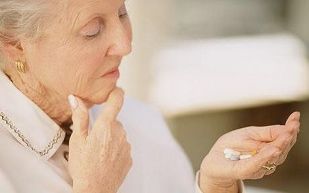 If the situation is neglected, short-acting glucocorticoid regimens may be prescribed to increase the effect.
If the situation is neglected, short-acting glucocorticoid regimens may be prescribed to increase the effect. - Cartilage recovery. Hyaline cartilage regeneration should be stimulated and its nutrition improved, as well as protected from future destruction. Different groups of chondroprotectors are used for this. When examining whether the drug helps with osteoarthritis of the knee, pay attention to the composition of the drug. The combination of important ingredients is one of the most effective products in this category.
- Improved tissue nutrition. In order to speed up the healing process and strengthen the joint, various drugs and additives are prescribed to improve metabolism, stimulate blood circulation and saturate cells with vitamins and minerals.
Only the treating physician has the right to prescribe and correct drug therapy for knee arthrosis. The use of drugs alone is not desirable, only the use of vitamin supplements and some chondroprotectants is allowed.
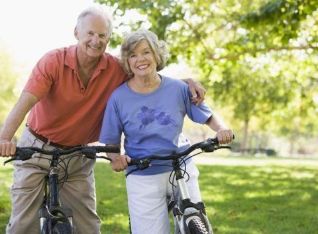
Diet and Lifestyle
Lifestyle changes, especially eating habits, are an important part of the treatment process. Much depends on the severity of the disease, for example, cycling at the beginning of development can be beneficial and can stimulate healing processes.
However, when problems with bending-extending movements occur, such a load can only worsen the patient’s condition and exacerbate destructive processes.
Activity is usually encouraged because exercise contributes to the treatment of many diseases of the musculoskeletal system. At the same time, it is extremely important to follow a rest regimen, avoid overloading your legs, and avoid sudden movements.
In particular, the question of whether it is possible to run with knee arthrosis is being investigated. It is better to replace this type of physical activity with fast walking.
When talking about nutrition, the contraindications to gonarthrosis are related to alcohol and fast food intake. It is especially important to exclude fatty and salty foods.
The diet should be as close to healthy as possible, meaning it should include vegetables and fruits, whole grains, milk and cheese, lean meat and fish. Products that help to restore hyaline cartilage are very useful: seafood, offal, jelly, apples, algae, etc.
Physiotherapy and other procedures
Physiotherapy is a mandatory part of treatment. In addition, modern medicine actively uses a variety of manual and non-traditional methods of influencing the body. It is advisable to pay attention to such procedures.
- Magnetotherapy. This is one of the techniques of physiotherapy. The magnetic effect stimulates the recovery processes, enhances the effect of drugs. Electrophoresis can also be used as an alternative.
- Massage. Different types of manual interventions should be performed by a qualified professional based on the results of the diagnosis and the prescription of the treating physician. Massage stimulates metabolic processes in the tissues, improves leg mobility, relieves discomfort.
- Hirudotherapy. This is a leech treatment. Leeches are known for their safe blood clearance. They bite into the patient’s skin, and the anticoagulants go along with the saliva. This kind of smaller blood supply helps to eliminate the inflammatory process, improves the nutrition of the tissues and has an overall health effect on the body.
- Acupuncture. This is one of the methods of reflexology, the essence of which is to influence the active points, which are located not only in the diseased area but throughout the body. The doctor inserts special needles into the skin at exactly the points that need to be used to solve the problem of gonarthrosis.
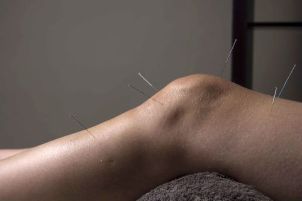
Physiotherapy
If we take a closer look at treatment with physical exercise, it should first be noted that the standards for permissible loads are set by a professional. It is best to take part in group movement therapy sessions. Arthrosis of the knee joint is included in the mandatory program, including postoperative rehabilitation.
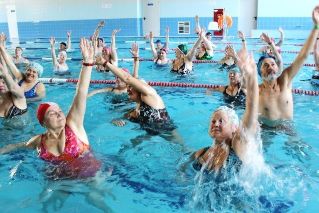
Highlight the main directions of gonarthrosis:
- Swimming pool. Swimming relieves stress and tension in the legs and helps the problem area to develop smoothly. Water aerobics in particular is useful in arthrosis of the knee joint, especially in overweight people and elderly patients.
- Hiking. There is no doubt that walking is beneficial for gonarthrosis, however, walks should be short and regular. But running is not recommended as a treatment method.
- Trainings with simulators. These can be special block trainers or, for example, an exercise bike if you have no contraindications. They are useful for strengthening the muscular and ligament apparatus.
- Physiotherapy. Orthopedic doctors and professional rehabilitation therapists are developing special sets of exercises to help gently train and restore the health of all groups of joints.
Physical activity for knee arthrosis should be regular and rigorously dosed. If you overload your feet or miss hours, there will be no beneficial effect. It is also important to choose exercises that are appropriate for your situation. Check this point in advance with your curator, for example, to see if it is possible to squat with arthrosis for you.
Traditional Medicine
In addition, home treatment of knee arthrosis is closely related to the use of traditional medicine recipes. It is worth remembering that before using the self-prepared medicine, you should make sure that there are no allergies and other contraindications, and consult your doctor.
Otherwise, the effect may be reversed or the effect of home remedies may increase the effect of pharmacy medications excessively. Nevertheless, traditional methods are still in demand as they cost much less than most purchased drugs.
The most commonly used treatments for gonarthrosis are:
- Herbal teas. Infusions and decoctions of bay leaves, chamomile, St. John’s wort, yarrow, and other herbs are actively used for both external and internal use. They are able to relieve inflammation, relieve pain, remove salts, and nourish the body with vitamins and other beneficial substances.
- Beekeeping products. Propolis, pergola, bee plague, wax and honey have healing effects in all directions. This is why treating arthrosis of the knee joint with honey is such a popular direction. It should be borne in mind that beekeeping products can cause severe allergies, so first make sure that they can be used safely.
- Alcohol tinctures. An excellent cure for warming and stimulating blood flow, relieving inflammation and improving leg mobility. White joints are especially useful for joints and should be cleaned of greens for two weeks and filled with vodka. Furthermore, the infusion is used to rub the affected area.
- Fresh plants. You can also use raw natural gifts. For example, the leaves of burdock or white cabbage should be kneaded slightly and then tied to the knee for at least 10 hours. You can use prefabricated compresses such as medical bile, unrefined sunflower oil, honey, etc. adding.
- Animal fats. It is added to homemade creams. To achieve optimal texture, the fat should be mixed with beeswax, herbal decoctions and other ingredients can be added.
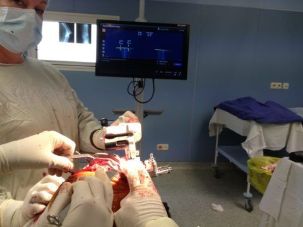
Surgery and Rehabilitation
Most patients are concerned with the question: can knee arthrosis be cured once it has progressed to stages 2-3? Unfortunately, the health of the cartilage liner cannot be restored, but there is still a way out of the situation.
If you suffer from advanced arthrosis of the knee joint, treatment options are divided into surgery and conservative complementary techniques. If the cartilage is completely worn out, only one operation can restore the functions of the injured limb.
The best solution is to use endoprostheses. In this case, the damaged elements of the joint are partially or completely removed, and special prostheses are placed in place with the help of screws and surgical cement. Over time, the bone tissue grows and fully absorbs all the necessary loads.
Because arthrosis of the knee joints cannot always be treated this way, the arthrodesis method is used as an alternative to reduce pain and prevent further limb deformity.
In the first case, if the motor ability of the foot is restored to its maximum, the opposite effect to arthrodesis appears - the limb is fixed in a certain position, and after the bone is incised, the elements merge. Thus, movement will only be available in one direction.
Disease Prevention
It is said to prevent osteoarthritis of the knee joint in order to prevent the development of the disease.
To do this, follow these guidelines:
- avoid injuries;
- do not overload your knees;
- less nervous;
- pursue an active lifestyle;
- gives up bad habits;
- eat right;
- take care of your weight;
- Treat other illnesses in a timely manner.
If you have a first problem, see your doctor so that you can start fighting the disease in time.



























